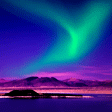- Home >
- Our Actions >
- Ambassador report
3
Comments
Where are the stars? |
|---|
|
by Muhammed Mikhail A Hafidz | 28-08-2017 13:36
|
Light Pollution... The most overlooked pollution ever...For most of Earth?s history, our spectacular universe of stars and galaxies has been visible in the darkness of the night sky. From our earliest beginnings, the vast spectacle arrayed across the dark sky has inspired questions about our universe and our relation to it. The history of scientific discovery, art, literature, astronomy, navigation, exploration, philosophy, and even human curiosity itself would be diminished without our view of the stars. But today, the increasing number of people living on earth and the corresponding increase in inappropriate and unshielded outdoor lighting has resulted in light pollution—a brightening night sky that has obliterated the stars for much of the world?s population. Most people must travel far from home, away from the glow of artificial lighting, to experience the awe-inspiring expanse of the Milky Way as our ancestors once knew it. The negative effects of the loss of this inspirational natural resource might seem intangible. But a growing body of evidence links the brightening night sky directly to measurable negative impacts on human health and immune function, on adverse behavioral changes in insect and animal populations, and on a decrease of both ambient quality and safety in our nighttime environment. Astronomers were among the first to record the negative impacts of wasted lighting on scientific research, but for all of us, the adverse economic and environmental impacts of wasted energy are apparent in everything from the monthly electric bill to global warming. In refreshing contrast to some of today?s complex and lingering environmental problems, many existing solutions to light pollution are simple, cost-effective, and instantaneous. Recognizing when outdoor lighting no longer serves its function and becomes a pollutant is the first step toward choosing appropriate solutions. Increased urban sky glow is responsible for the disappearance of the Milky Way from our night skies. For professional astronomers, the increasing distance to prime observing sites, well away from sources of air pollution and urban sky glow, becomes more problematic as economic and environmental energy costs continue to rise. Amateur astronomers, meanwhile, find prime observing spots eradicated by commercial and residential development and must travel farther from home for a clear view of the skies. Increasingly, the most important equipment needed to enjoy the wonders of the night sky is an automobile with a full tank of gas and a map.
|

|
|
|










 Previous : Temperatures in Antarctica exp...
Previous : Temperatures in Antarctica exp...









3 Comments
thanks for sharing
Posted 02-02-2018 16:53
good information
Posted 02-02-2018 16:53
Thanks for sharing! I remember reading about the adverse effects of light pollution on bird navigation that in turn affects their migration. Any thoughts on that?
Posted 28-08-2017 21:25